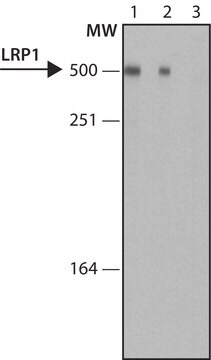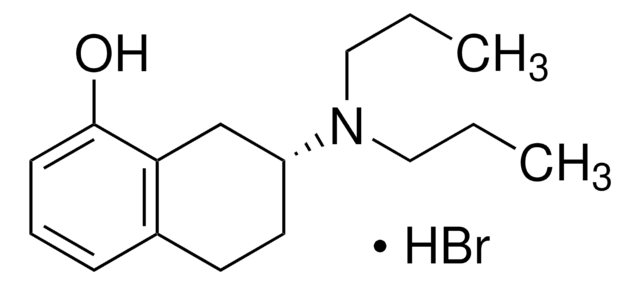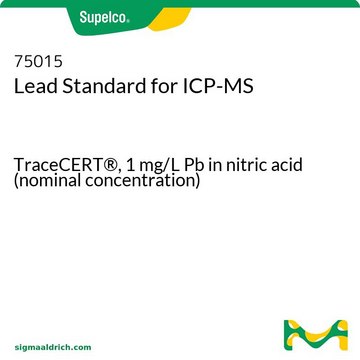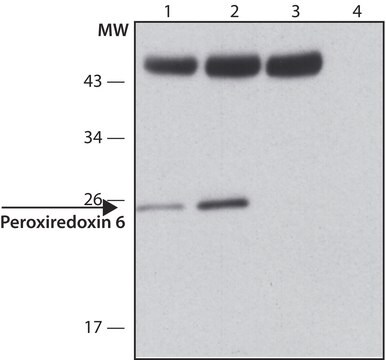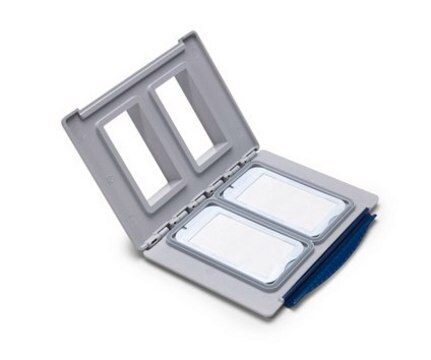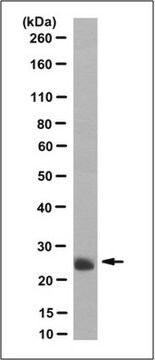MABN1796
Anti-LRP1 Antibody, 85 kDa subunit Antibody, clone 6F8
clone 6F8, from mouse
Sinonimo/i:
Prolow-density lipoprotein receptor-related protein 1, A2MR, Alpha-2-macroglobulin receptor, APER, Apolipoprotein E receptor, CD19, Low-density lipoprotein receptor-related protein 1 85 kDa subunit, LRP-85
About This Item
Prodotti consigliati
Origine biologica
mouse
Livello qualitativo
Forma dell’anticorpo
purified immunoglobulin
Tipo di anticorpo
primary antibodies
Clone
6F8, monoclonal
Reattività contro le specie
human, mouse
tecniche
ELISA: suitable
western blot: suitable
Isotipo
IgG1κ
N° accesso NCBI
Condizioni di spedizione
ambient
modifica post-traduzionali bersaglio
unmodified
Informazioni sul gene
human ... LRP1(4035)
Descrizione generale
Specificità
Immunogeno
Applicazioni
Neuroscience
ELISA Analysis: A representative lot was employed as the capture antibody for the detection of LRP1 in different human brain regions by sandwich ELISA. a strong positive correlation between LRP1 and PSD95 regional distribution was observed (Shinohara, M., et al. (2013). Acta Neuropathol. 125(4):535-547).
Western Blotting Analysis: A representative lot detected siRNA-mediated LRP1 knockdown in human brain vascular pericytes (Casey, C.S., et al. 2015. J. Biol. Chem. 290(22):14208-14217).
Note: The use of 5% skim milk as the blocking agent and 1-2 hr instead of overnight primary incubation time is recommended for Western blotting application to minimize non-specific background.
Qualità
Western Blotting Analysis: 0.5 µg/mL of this antibody detected LRP1 85 kDa subunit in 10 µg of mouse whole brain tissue lysate.
Descrizione del bersaglio
Stato fisico
Stoccaggio e stabilità
Altre note
Esclusione di responsabilità
Non trovi il prodotto giusto?
Prova il nostro Motore di ricerca dei prodotti.
Raccomandato
Codice della classe di stoccaggio
12 - Non Combustible Liquids
Classe di pericolosità dell'acqua (WGK)
WGK 1
Punto d’infiammabilità (°F)
Not applicable
Punto d’infiammabilità (°C)
Not applicable
Certificati d'analisi (COA)
Cerca il Certificati d'analisi (COA) digitando il numero di lotto/batch corrispondente. I numeri di lotto o di batch sono stampati sull'etichetta dei prodotti dopo la parola ‘Lotto’ o ‘Batch’.
Possiedi già questo prodotto?
I documenti relativi ai prodotti acquistati recentemente sono disponibili nell’Archivio dei documenti.
Il team dei nostri ricercatori vanta grande esperienza in tutte le aree della ricerca quali Life Science, scienza dei materiali, sintesi chimica, cromatografia, discipline analitiche, ecc..
Contatta l'Assistenza Tecnica.